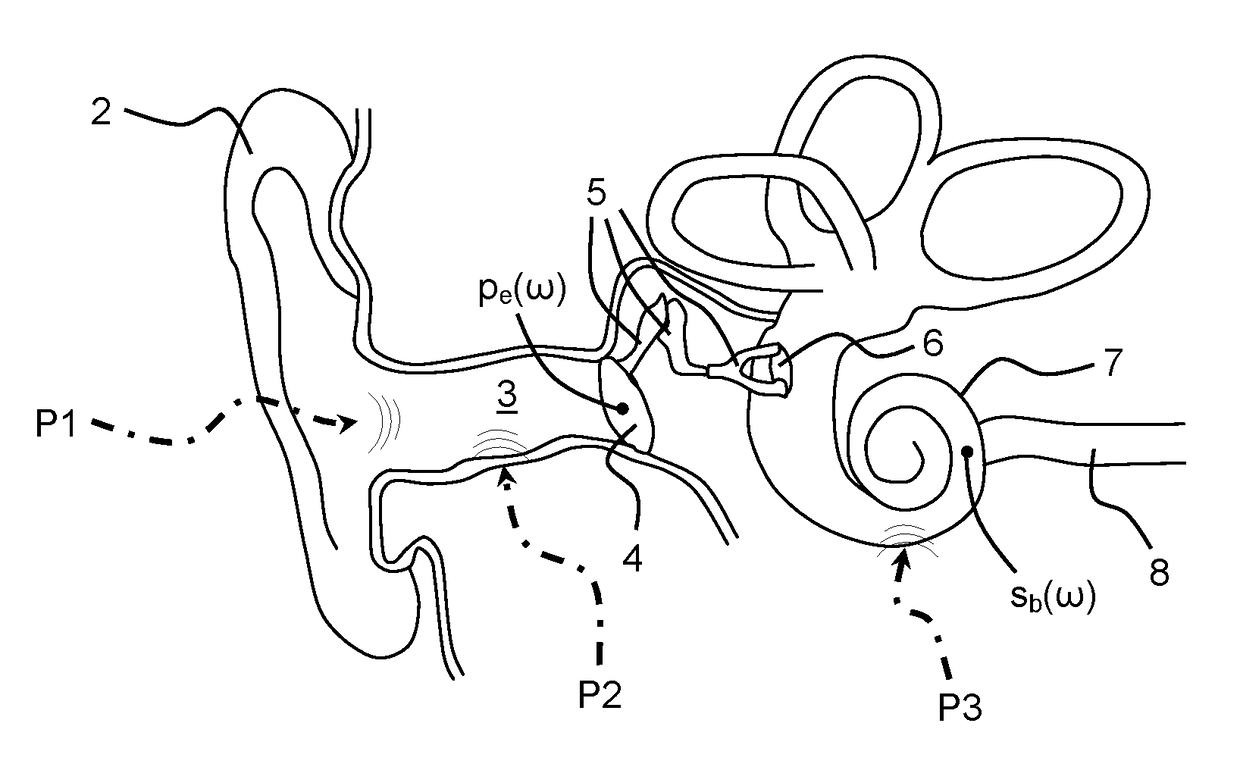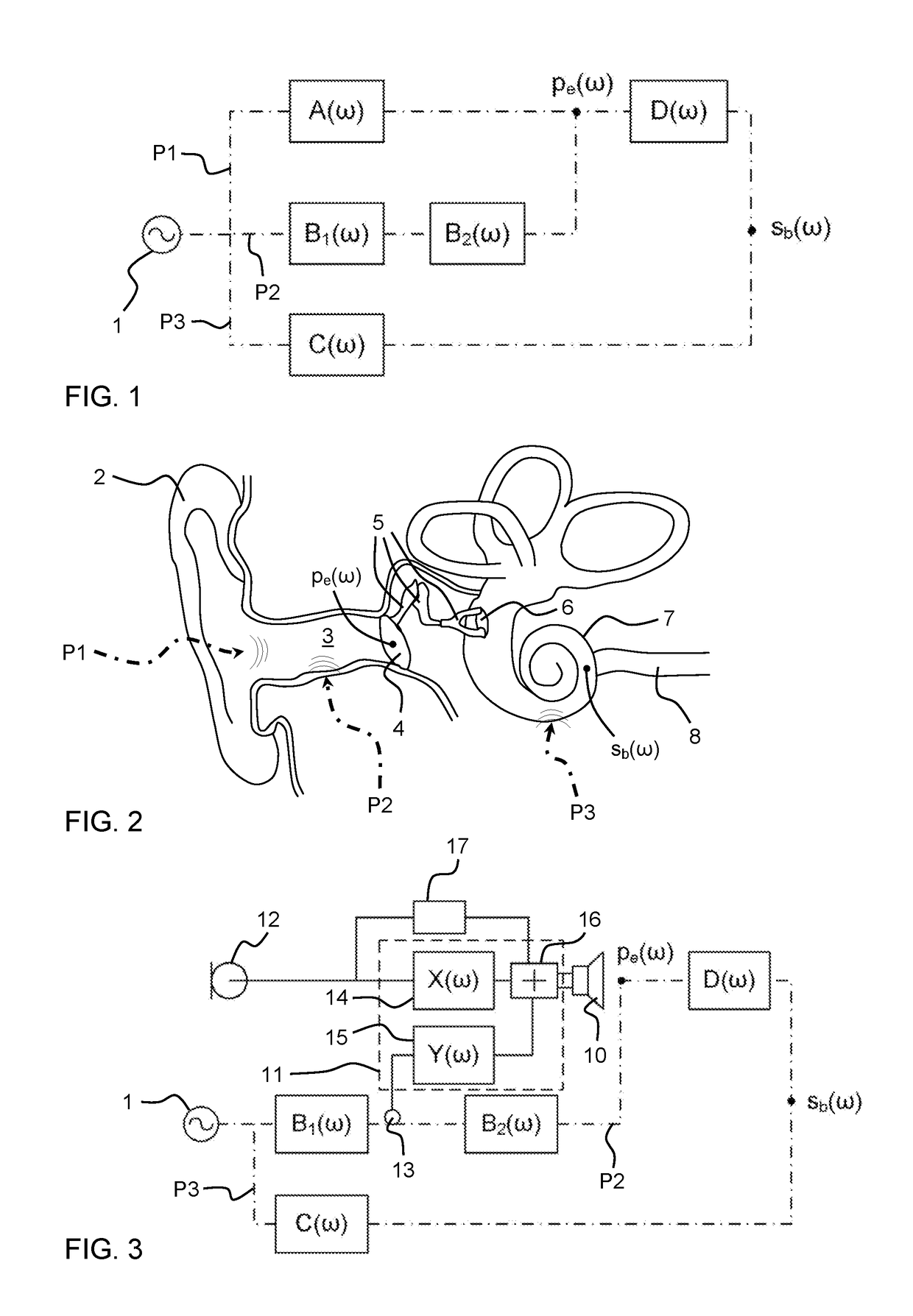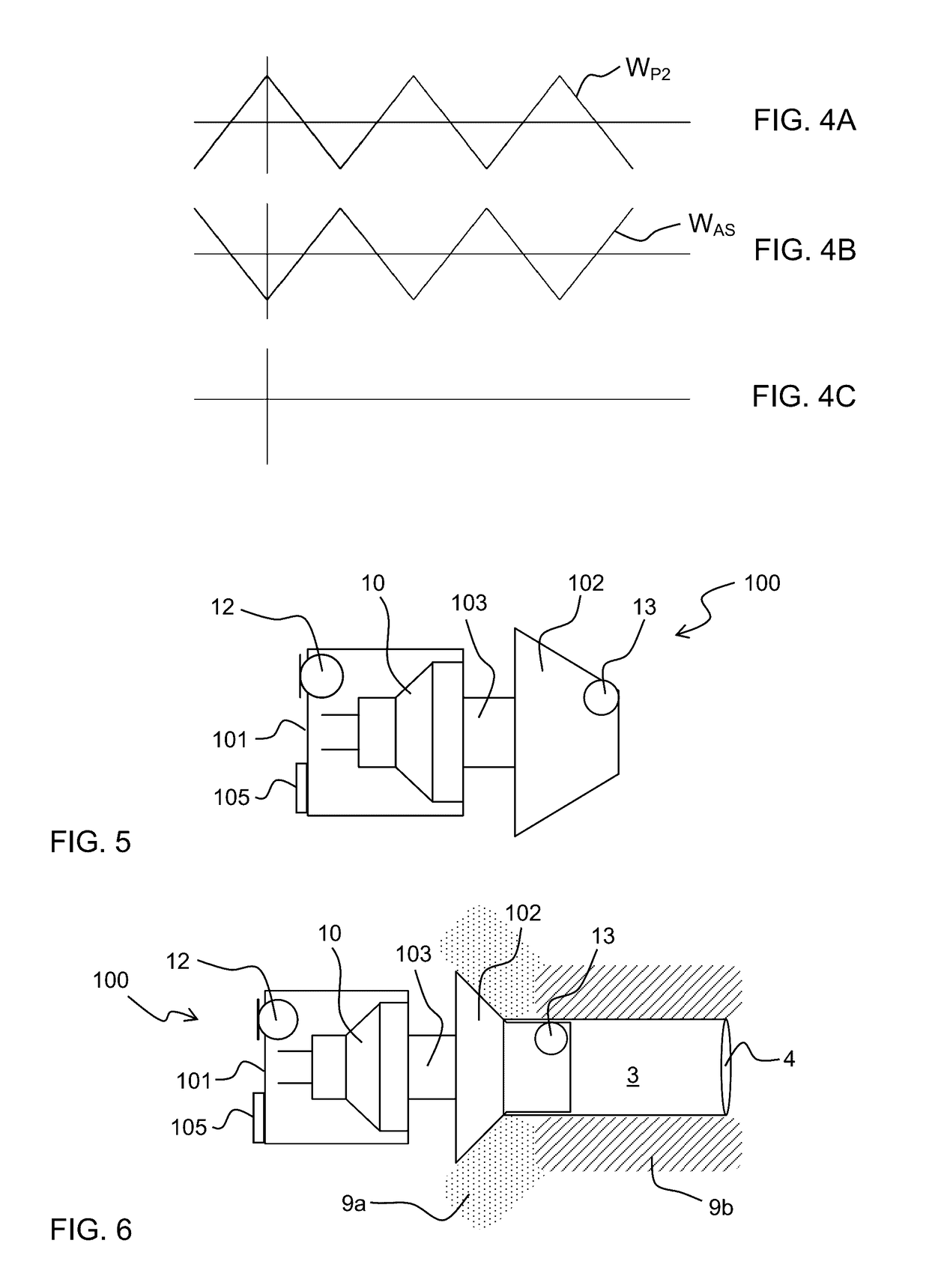Controlling own-voice experience of talker with occluded ear
a technology of occluded ear and talker, which is applied in the direction of occlusion effect electronic compensation, loudspeakers, instruments, etc., can solve the problems of increasing the bone-conducted sound vibration at the eardrum, causing relatively high sound pressure levels at the eardrum, and small changes in volume velocity in the ear canal will generate relatively large pressure variations at the eardrum, etc., to achieve the effect of simple implementation and low cos
- Summary
- Abstract
- Description
- Claims
- Application Information
AI Technical Summary
Benefits of technology
Problems solved by technology
Method used
Image
Examples
Embodiment Construction
[0046]Embodiments of the present invention will now be described more fully hereinafter with reference to the accompanying drawings, in which some, but not all, embodiments of the invention are shown. Indeed, the invention may be embodied in many different forms and should not be construed as limited to the embodiments set forth herein; rather, these embodiments are provided so that this disclosure may satisfy applicable legal requirements. Like numbers refer to like elements throughout.
[0047]Also, it will be understood that, where possible, any of the advantages, features, functions, devices, and / or operational aspects of any of the embodiments of the present invention described and / or contemplated herein may be included in any of the other embodiments of the present invention described and / or contemplated herein, and / or vice versa. In addition, where possible, any terms expressed in the singular form herein are meant to also include the plural form and / or vice versa, unless explic...
PUM
 Login to View More
Login to View More Abstract
Description
Claims
Application Information
 Login to View More
Login to View More - R&D
- Intellectual Property
- Life Sciences
- Materials
- Tech Scout
- Unparalleled Data Quality
- Higher Quality Content
- 60% Fewer Hallucinations
Browse by: Latest US Patents, China's latest patents, Technical Efficacy Thesaurus, Application Domain, Technology Topic, Popular Technical Reports.
© 2025 PatSnap. All rights reserved.Legal|Privacy policy|Modern Slavery Act Transparency Statement|Sitemap|About US| Contact US: help@patsnap.com



